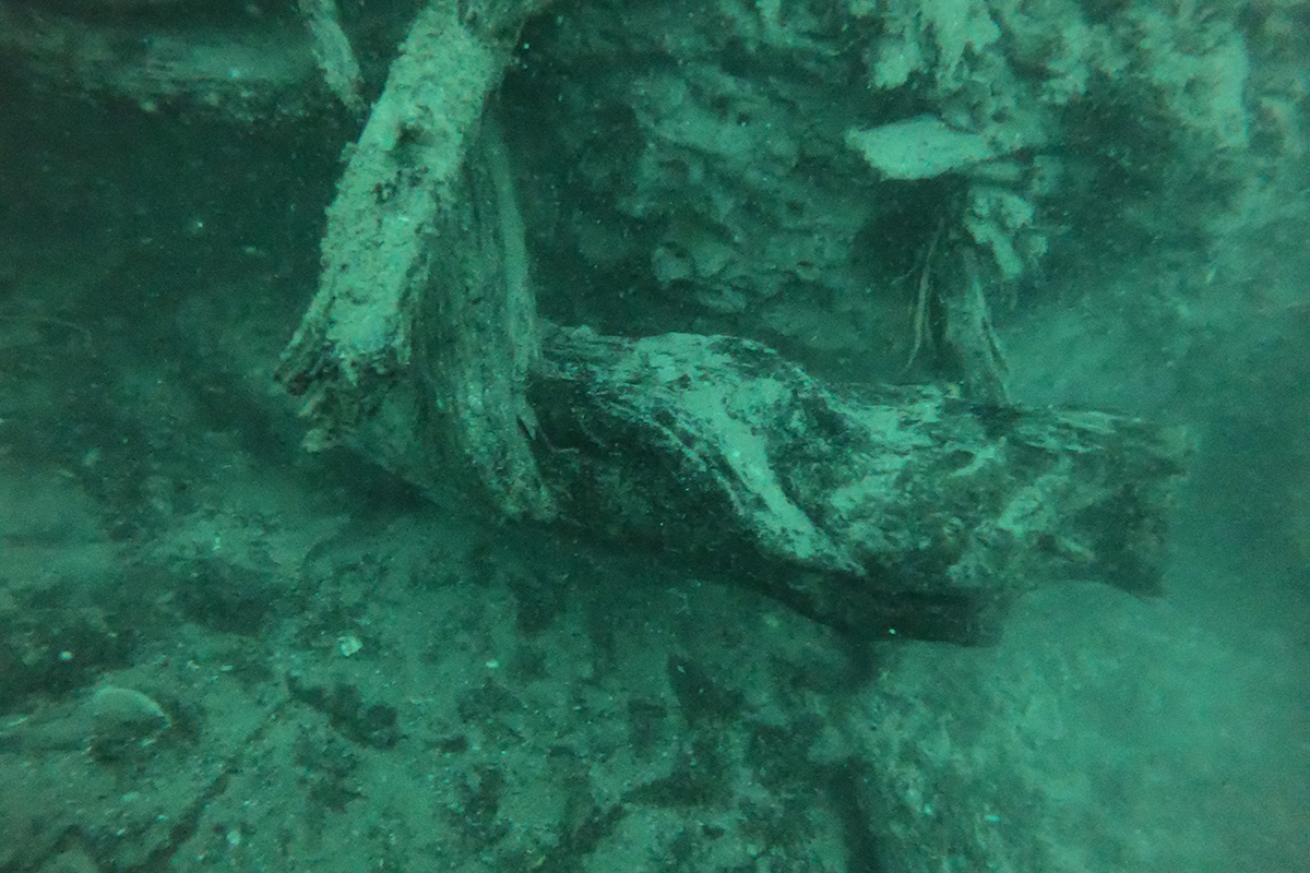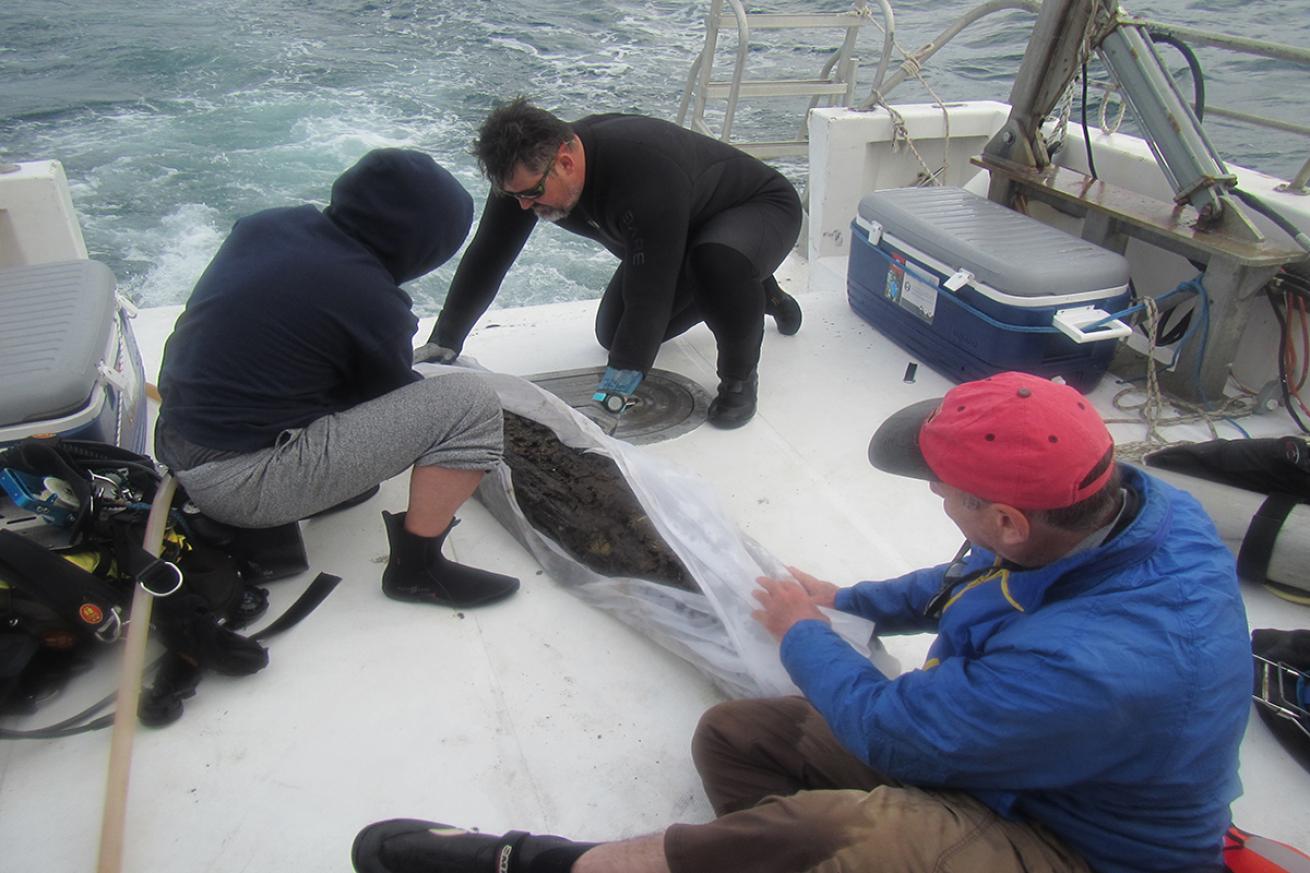Alabama’s Underwater Forest May Become a Marine Sanctuary

NOAA/Francis ChoiScientists hope the submerged forest holds medical breakthroughs and climate lessons.
Off the coast of Alabama, about 60 feet under the surface, lies the remains of an ancient cypress forest that grew at least 50,000 years ago before the Gulf of Mexico’s expansion flooded the arbor.
Revealed in 2004 when Hurricane Ivan’s massive waves shook away its sediment tomb, this aquatic thicket is the largest, most remote, and oldest one discovered in the world. And after a furniture-maker filed a permit application to log the forest last year, then-Alabama Rep. Bradley Byrne introduced a Congressional bill to designate the area a national marine sanctuary.
“The underwater forest is another unique Alabama gem with global importance,” Byrne said in a statement when introducing the bill in October. “As the only known site where a coastal Ice Age forest this old has been preserved in place, we must take action now to protect it.” He tells NBC he’s hoping this next Congress will pass the act, preventing any such commercial exploitation and preserving the area for science and tourism.

NOAA/Brian HelmuthResearchers from the Ocean Genome Legacy Center wrap a log pulled from the forest to keep it damp until it reaches the lab, where it was dissected to see what animals or plants were living inside.
Kristine DeLong, a paleoclimatologist at Louisiana State University who has studied the forest since shortly after its discovery, calls it a “goldmine of information that we just don’t have access to anywhere else.” The sediment cover that preserved the trees from decomposing made it possible for DeLong’s carbon dating to reveal it is “radiocarbon dead,” or at least 50,000 years old.
She and her team are using their data to analyze information about everything from what the climate was like during the Ice Age to what kinds of insects and plants once populated the grounds. Another team explored the site last year to begin researching whether shipworms, which moved into the storm-liberated wood, hold any medicinal promise.
Experts are hopeful that under President Joe Biden, the submerged forest may be protected.
“As the climate continues to change, what’s today land could very well be ocean,” DeLong says. “I think it’s a really powerful message.










